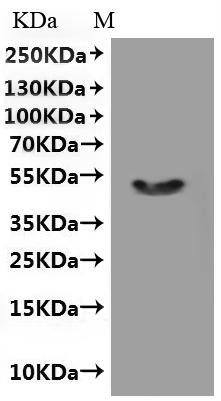Cookie-Einstellungen
Diese Website benutzt Cookies, die für den technischen Betrieb der Website erforderlich sind und stets gesetzt werden. Andere Cookies, die den Komfort bei Benutzung dieser Website erhöhen, der Direktwerbung dienen oder die Interaktion mit anderen Websites und sozialen Netzwerken vereinfachen sollen, werden nur mit Ihrer Zustimmung gesetzt.
Konfiguration
Technisch erforderlich
Diese Cookies sind für die Grundfunktionen des Shops notwendig.
"Alle Cookies ablehnen" Cookie
"Alle Cookies annehmen" Cookie
Ausgewählter Shop
CSRF-Token
Cookie-Einstellungen
FACT-Finder Tracking
Individuelle Preise
Kundenspezifisches Caching
Session
Währungswechsel
Komfortfunktionen
Diese Cookies werden genutzt um das Einkaufserlebnis noch ansprechender zu gestalten, beispielsweise für die Wiedererkennung des Besuchers.
Facebook-Seite in der rechten Blog - Sidebar anzeigen
Merkzettel
Statistik & Tracking
Endgeräteerkennung
Kauf- und Surfverhalten mit Google Tag Manager
Partnerprogramm

Bei Fragen nutzen Sie gerne unser Kontaktformular.
Bestellen Sie auch per E-Mail: info@biomol.com
Größere Menge gewünscht? Bulk-Anfrage
Bestellen Sie auch per E-Mail: info@biomol.com
Größere Menge gewünscht? Bulk-Anfrage
Organism: Homo sapiens (Human). Source: Mammalian cell. Expression Region: 690-1104aa. Protein... mehr
Produktinformationen "Transient receptor potential cation channel subfamily M member 8 (TRPM8), partial-VLPs, human, recom"
Organism: Homo sapiens (Human). Source: Mammalian cell. Expression Region: 690-1104aa. Protein Length: Partial. Tag Info: C-terminal 10xHis-tagged (This tag can be tested only under denaturing conditions). Target Protein Sequence: TKNWKIILCL FIIPLVGCGF VSFRKKPVDK HKKLLWYYVA FFTSPFVVFS WNVVFYIAFL LLFAYVLLMD FHSVPHPPEL VLYSLVFVLF CDEVRQWYVN GVNYFTDLWN VMDTLGLFYF IAGIVFRLHS SNKSSLYSGR VIFCLDYIIF TLRLIHIFTV SRNLGPKIIM LQRMLIDVFF FLFLFAVWMV AFGVARQGIL RQNEQRWRWI FRSVIYEPYL AMFGQVPSDV DGTTYDFAHC TFTGNESKPL CVELDEHNLP RFPEWITIPL VCIYMLSTNI LLVNLLVAMF GYTVGTVQEN NDQVWKFQRY FLVQEYCSRL NIPFPFIVFA YFYMVVKKCF KCCCKEKNME SSVCCFKNED NETLAWEGVM KENYLVKINT KANDTSEEMR HRFRQLDTKL NDLKGLLKEI ANKIK. Purity: The purity information is not available for VLPs proteins. Endotoxin: n/a. Biological Activity: n/a. Form: Lyophilized powder. Buffer: Lyophilized from a 0.2 µm filtered PBS, 6% Trehalose, pH 7.4. Reconstitution: We recommend that this vial be briefly centrifuged prior to opening to bring the contents to the bottom. Please reconstitute protein indeionized sterile water to a concentration of 0.1-1.0 mg/mL.Aliquot for long-term storage at -80 °C. Solubilize for 60 minutes at room temperature with occasional gentle mixing. Avoid vigorous shaking or vortexing. Storage: The shelf life is related to many factors, storage state, buffer ingredients, storage temperature and the stability of the protein itself. Generally, the shelf life of liquid form is 6 months at -20 °C/-80 °C. The shelf life of lyophilized form is 12 months at -20 °C/-80 °C. Notes: The VLPs are expressed from human 293 cells (HEK293).Mix the sample gently by repeatedly pipetting it up and down. Do not vortex.Repeated freezing and thawing is not recommended.Store the protein at -20 °C/-80 °C upon receiving it, and ensure to avoid repeated freezing and thawing, otherwise, it will affect the protein activity. The immunization strategy should be optimized (antigen dose, regimen and adjuvant). Relevance: Receptor-activated non-selective cation channel involved in detection of sensations such as coolness, by being activated by cold temperature below 25 degrees Celsius. Activated by icilin, eucalyptol, menthol, cold and modulation of intracellular pH. Involved in menthol sensation. Permeable for monovalent cations sodium, potassium, and cesium and divalent cation calcium. Temperature sensing is tightly linked to voltage-dependent gating. Activated upon depolarization, changes in temperature resulting in graded shifts of its voltage-dependent activation curves. The chemical agonist menthol functions as a gating modifier, shifting activation curves towards physiological membrane potentials. Temperature sensitivity arises from a tenfold difference in the activation energies associated with voltage-dependent opening and closing. In prostate cancer cells, shows strong inward rectification and high calcium selectivity in contrast to its behavior in normal cells which is characterized by outward rectification and poor cationic selectivity. Plays a role in prostate cancer cell migration. Isoform 2 and isoform 3 negatively regulate menthol- and cold-induced channel activity by stabilizing the closed state of the channel. Reference: n/a. Function: nan
| Schlagworte: | TRPM8, Trp-p8, LTRPC6, LTrpC6, LTrpC-6, Transient receptor potential p8, Long transient receptor potential channel 6, Transient receptor potential cation channel subfamily M member 8, Recombinant Human Transient receptor potential cation channel subfamily |
| Hersteller: | Cusabio |
| Hersteller-Nr: | MP768757HU1 |
Eigenschaften
| Anwendung: | Activity not tested |
| Konjugat: | No |
| Wirt: | Mammalian cells |
| Spezies-Reaktivität: | human |
| MW: | 50.5 kD |
| Format: | Lyophilized |
Datenbank Information
| KEGG ID : | K04983 | Passende Produkte |
| UniProt ID : | Q7Z2W7 | Passende Produkte |
| Gene ID : | GeneID 79054 | Passende Produkte |
Handhabung & Sicherheit
| Lagerung: | -20°C |
| Versand: | +4°C (International: +4°C) |
Achtung
Nur für Forschungszwecke und Laboruntersuchungen: Nicht für die Anwendung im oder am Menschen!
Nur für Forschungszwecke und Laboruntersuchungen: Nicht für die Anwendung im oder am Menschen!
Hier kriegen Sie ein Zertifikat
Loggen Sie sich ein oder registrieren Sie sich, um Analysenzertifikate anzufordern.
Bewertungen lesen, schreiben und diskutieren... mehr
Kundenbewertungen für "Transient receptor potential cation channel subfamily M member 8 (TRPM8), partial-VLPs, human, recom"
Bewertung schreiben
Loggen Sie sich ein oder registrieren Sie sich, um eine Produktbewertung abzugeben.
Zuletzt angesehen

